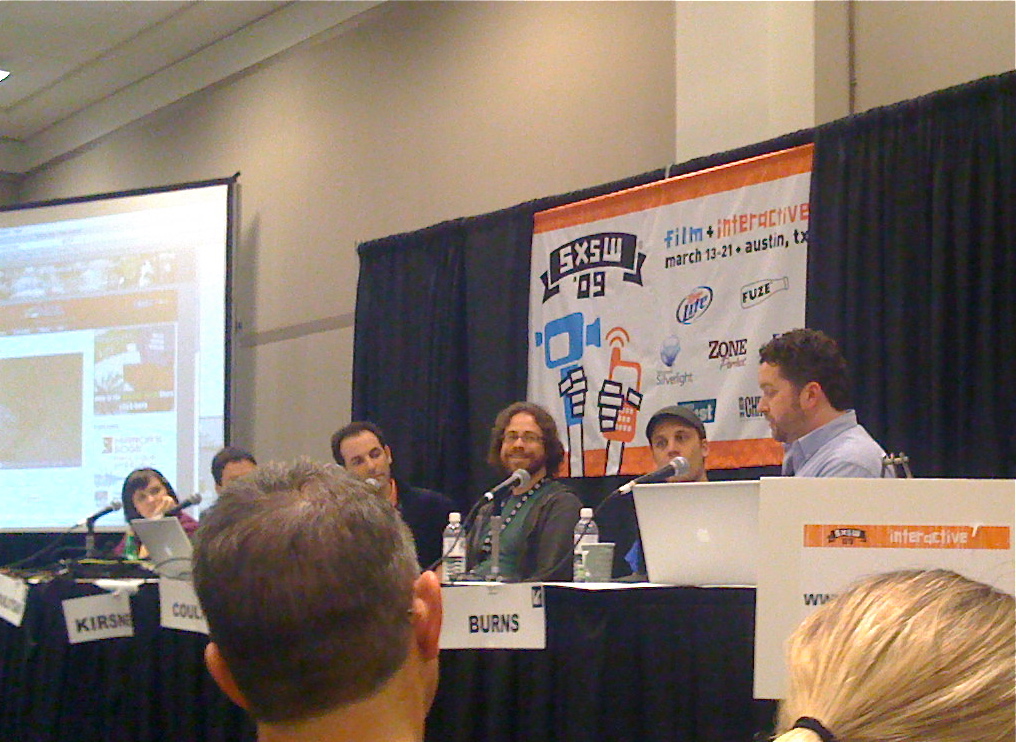Moderator Scott Kirsner (Editor, CinemaTech) led the discussion on how to effectively build a brand online. Panelists included Burnie Burns (Rooster Teeth Productions), Markos Moulitsas (founder/publisher, Daily Kos), Brett Gaylor (filmmaker, RiP), Jonathan Coulton (singer/songwriter) and Natasha Wescoat (artist/blogger, Natasha Wescoat Inc). Each panelist described the techniques and resources they used to establish and maintain an audience online.
Coulton’s popularity grew after he promised to write, record and publish a song every Friday on the free podcast project, “Thing a Week.” This allowed people to easily access to his material. “Make it as easy as possible, reduce friction,” Coulton explained. Coulton is now an internet sensation whose songs are featured on Spiffworld and many popular video games such as Rockband.
Wescoat stirred attention when she listed her art work on eBay. “I felt like eBay had good traffic,” said Wescoat. “It took a week to start and blew up from there.” Her advice, ”Get involved in every possible website because the traffic is there.” She now licenses her brands for various products worldwide.
Moulitsas developed his political site the Daily Kos in order to narrow a niche that nobody was hitting in politics and to create a safe haven for progressives. To make his website stand out, Moulitsas created content that could not be found anywhere else, used color nobody else was using and made a logo that was easy for people to remember. The Daily Kos is now the largest progressive community site in the United States.
Burns’ goal was to have a consitent level of release for Red vs. Blue . He realized that people generally had 5-10 bookmarks they rotated through online, so he found a way to be placed in the rotation. “Within six months Red vs. Blue had a million viewers a week,” said Burns. “Since 2003 we have spent only $25 on placed advertising.” Red vs. Blue is now one of the most popular game movie series ever released.
Gaylor’s approach was to send his users on a mission. He let viewers of his documentary, RiP: A Remix Manifesto, contribute to the film and follow the conversation on multiple social networks. He shares his footage on Open Source Cinema allowing anyone to remix the film. This participatory media experiment involving copyright and remix culture has earned much recognition across the United States and Canada.
